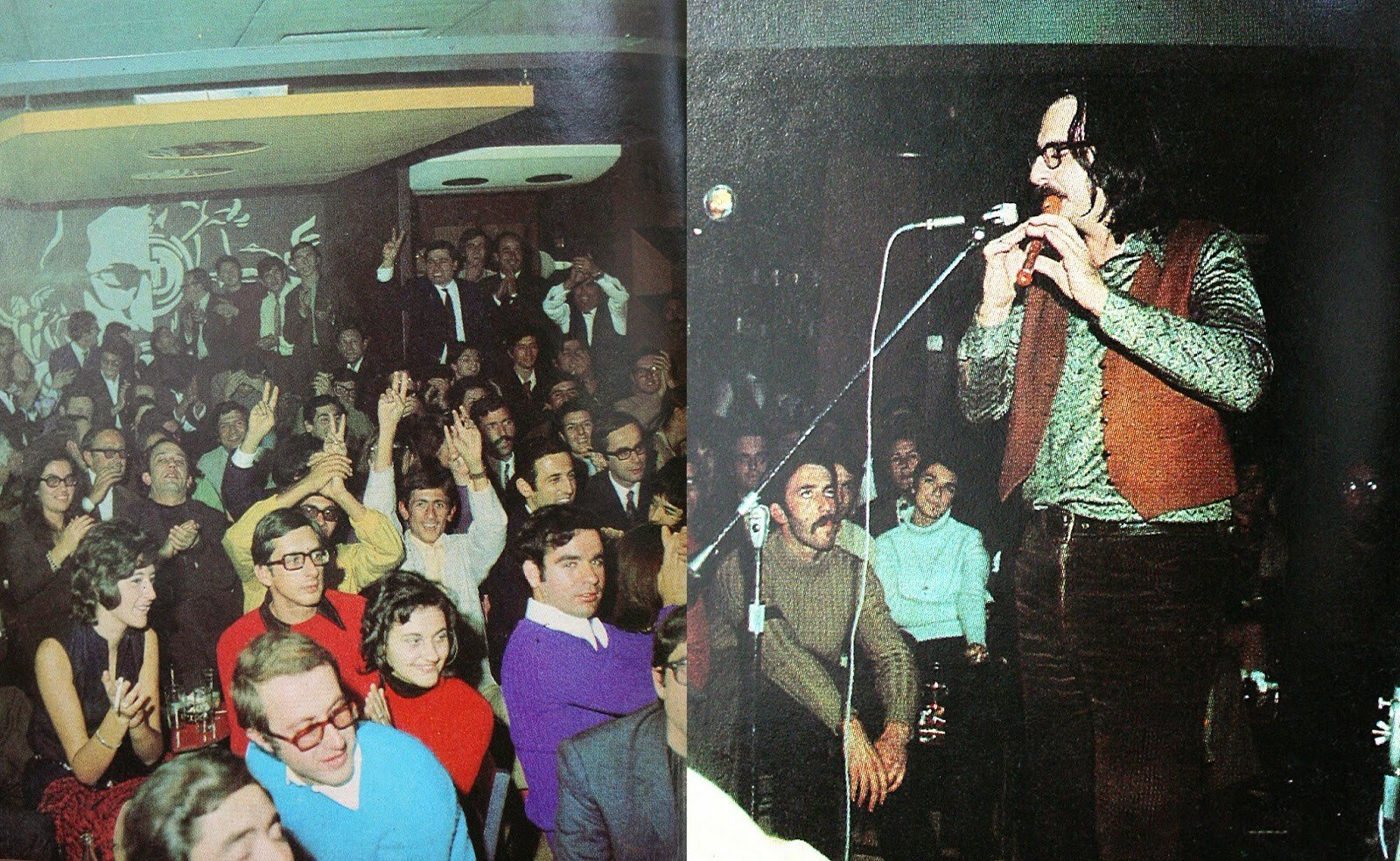Born in Thessaloniki on 2 December 1944, Dionysis Savvopoulos, who died Tuesday evening at 81, moved to Athens in the spring of 1963 with little more than determination and a notebook of songs. He briefly studied law in Thessaloniki but was drawn to the student movement and public life in the capital, where he mingled with activists, artists and intellectuals, and took his first steps on tiny stages while doing odd jobs to get by.

“The Garden of the Madman” (Winter 1969-1970)
The 1960s: emergence and a debut that changed the map
After early appearances in Athenian and island boîtes, he met composer Nikos Mamangakis, who brought him to Lyra and producer Alexandros Patsifas. Two EPs in 1965, featuring “Synnefoula,” “Ti Na Ta Kano Ta Tragoudia Sas,” and others, announced a distinct voice that sat alongside but apart from the “New Wave.”
His first LP, “To Fortigo” (The Truck, 22 Nov 1966), was a watershed for Greek song. It fused protest sensibilities influenced by Bob Dylan with love songs and vivid portraits of an “other” Greece of troupes, streets and margins. Sales were modest, impact enormous.
The 21 April 1967 coup led to his arrest and torture at Bouboulina (Aug-Sep 1967). He married Aspa (Aspasia Arapidou), left for Paris and later Milan, then returned. These ordeals and travels fed his second album, “To Perivoli tou Trellou” (1969, issued again by Lyra, whose songs he presented live that winter at the Rodeo club, now with the first version of his backing group, Bourboulia.
The 1970s: rock grammar, Greek roots, and stage revolutions
In “Ballos” (1971) he brought rock form unmistakably into his records, binding it to Balkan colors, demotic modes and a razor lyric sense. At the Rodeo and later the Kyttaro (1972-74), his shows became multi-arts happenings with folk players, shadow theater and even wrestling interludes, groundbreaking for Athens. The next studio landmark, “Vromiko Psomi” (1972) with the band Laistrygona, completed a rock manifesto that also folded in rebetiko and folk idioms.
With the political thaw, he released “10 Chronia Kommátia” (1975), a personal retrospective with diary-like bridges; recorded the soundtrack to Pantelis Voulgaris’ “Happy Day” (1976); and produced Aristophanic songs for “Acharneis” (1977) with a cast that introduced future greats (Sakis Boulas, Nikos Papazoglou, Manolis Rasoulis). He also produced “I Ekdikisi tis Gyftias” (1978) by Nikos Xydakis–Manolis Rasoulis, a cornerstone of the new laïko.
He closed the decade with the double album “Rezerva” (1979), containing enduring milestones such as “Gennithika sti Saloniki” and “Makry Zeïbekiko gia ton Niko.”

The 1980s: mass appeal and fierce critique
He curated stages and produced records for others, and in 1983 issued “Trapezakia Exo,” whose songs became ubiquitous and controversial in equal measure. That year’s Olympic Stadium concert in Athens sealed his mass reach. Mid-decade he created for ERT the 30-part TV series “Zito to Elliniko Tragoudi,” perhaps Greek television’s most loving survey of song.
In 1989 came “To Kourema,” an abrasive, politically charged cycle that confronted the scandals of the era and openly broke with parts of the Left, provoking intense debate. Whatever one’s stance, it remains a defining snapshot of Greece on the cusp of the 1990s.
The 1990s: resets and reinventions
Live anthologies (“Anadromi ’63-’89”) were followed by “Mi Petaxis Tipota” (1994), a warmer set that welcomed a new generation of listeners. He collected stage and screen work on “Parartima” (1996), reimagined international rock classics with Greek lyrics on “Xenodocheio” (1997), and delivered his last studio album of new songs, “O Chronopoios” (1999) a low-key, finely arranged work many consider his best since the early 1980s.
2000s to recent years: collaborations, stages, albums from the road
From the 2000s onward he multiplied collaborations across eras and styles, on stage and on record, with artists from Eleftheria Arvanitaki and Alkinoos Ioannidis to Thanasis Papakonstantinou (their joint album “Samanos,” 2008). The live catalog grew with “Savvorama” (2001), “O Pyrinas” (2007) and “Siko Psychi Mou Dose Revma” (2016, with Eleni Vitali).
Savvopoulos maintained a steady presence in the media, offering views that often divided opinion yet always sought to engage the “big picture.” Agreement or not, he treated dialogue with audiences as a central creative force; and Greece, in all its contradictions, as his lifelong subject.

Legacy
Across six decades he threaded protest song, rock energy, demotic and rebetiko memory, theater and television into a single, unmistakable authorship. His landmark records, “To Fortigo,” “To Perivoli tou Trellou,” “Ballos,” “Vromiko Psomi,” “Rezerva,” “Trapezakia Exo,” “To Kourema,” “O Chronopoios”, map not just a career but a cultural history. His stages at Rodeo and Kyttaro rewired performance language; his productions opened doors for others; his lyrics and melodies reshaped how Greek song could sound, and say.
The conversation between his songs and the public he chronicled is not ending. It simply changes key and carries on.
Read the tribute article in Greek here: Parathyro.politis.com.cy
Source: LiFO
